The Power of Weeds! Discover the Secrets of the Resilient Houttuynia—A Perfect Plant for Science Learning (Dicot Observation)
Hi, I’m Ken Kuwako, your science trainer. For me, every day is an experiment!
During the damp, humid season, have you ever caught a whiff of that distinctive smell from a plant on the roadside or behind your house? That’s right, it’s Doku-dami (Houttuynia cordata). While most people shy away from it thinking, “Ugh, that smell…,” this plant is actually a goldmine of ‘aha!’ moments, making it a perfect observation subject for a middle school science class. Today, let’s dive into the secrets of its incredible resilience and surprising biology!
Observing and Using Doku-dami: A Wonder Plant Bursting with Life
If you’re looking for a great example of a dicot for a plant observation experiment, look no further. We’re focusing on the highly resilient Doku-dami and summarizing the key learning points you can discover just by observing it.
🌿 Doku-dami’s Characteristics and Ecology
Doku-dami is a perennial plant that thrives in shady, damp spots—think along fence lines or next to buildings. That… unique… aroma? It comes from a compound called “decanoyl acetaldehyde.” This isn’t just to offend your nose; it’s actually a chemical barrier that protects the plant from mold and bacteria. Between this powerful scent and its astonishing ability to spread (more on that later), Doku-dami is a masterclass in survival strategy. It’s rare to find such a perfect subject for a science lesson. Let’s dig in and see exactly what makes it so special.
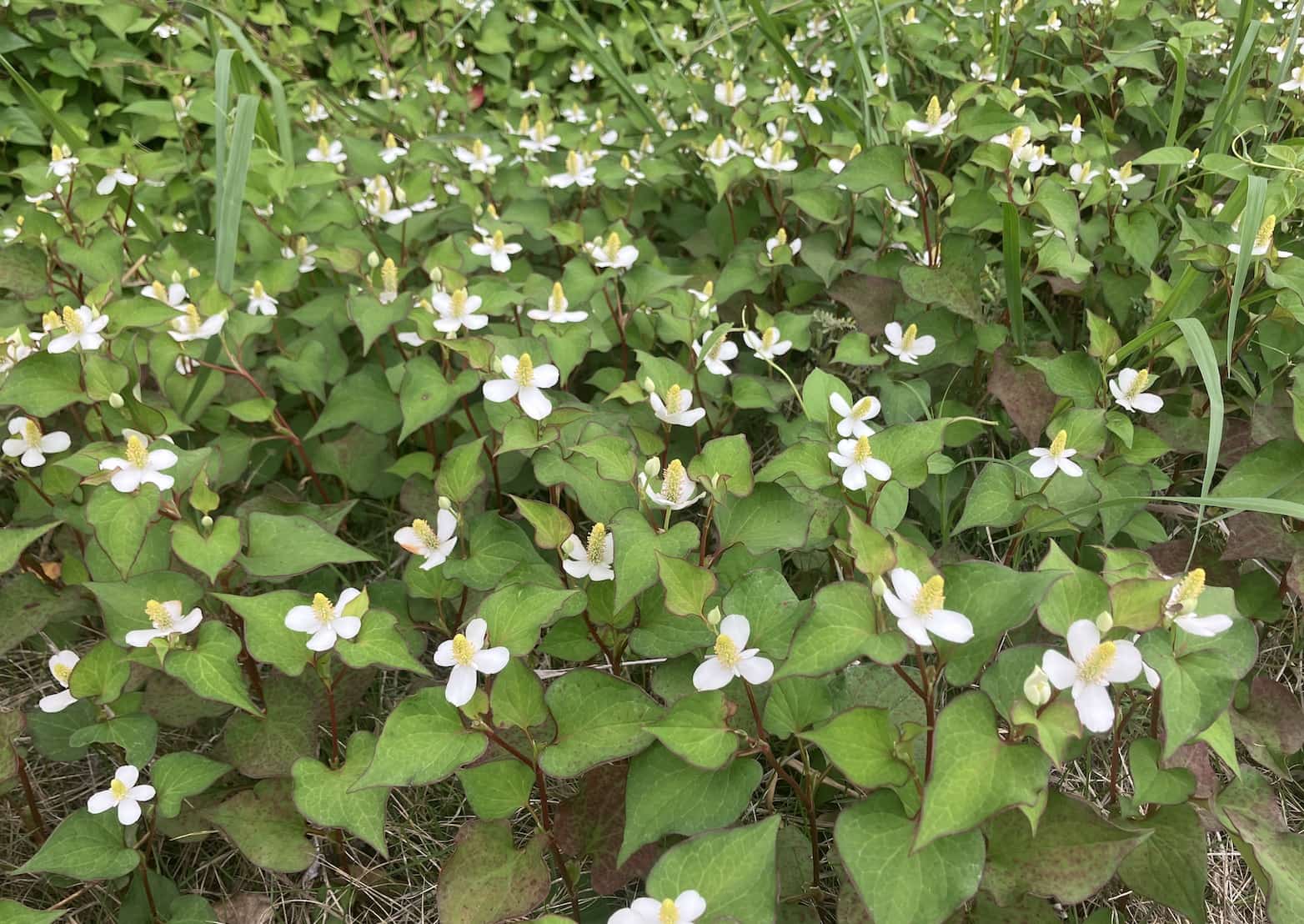
🔬 Leaf Characteristics
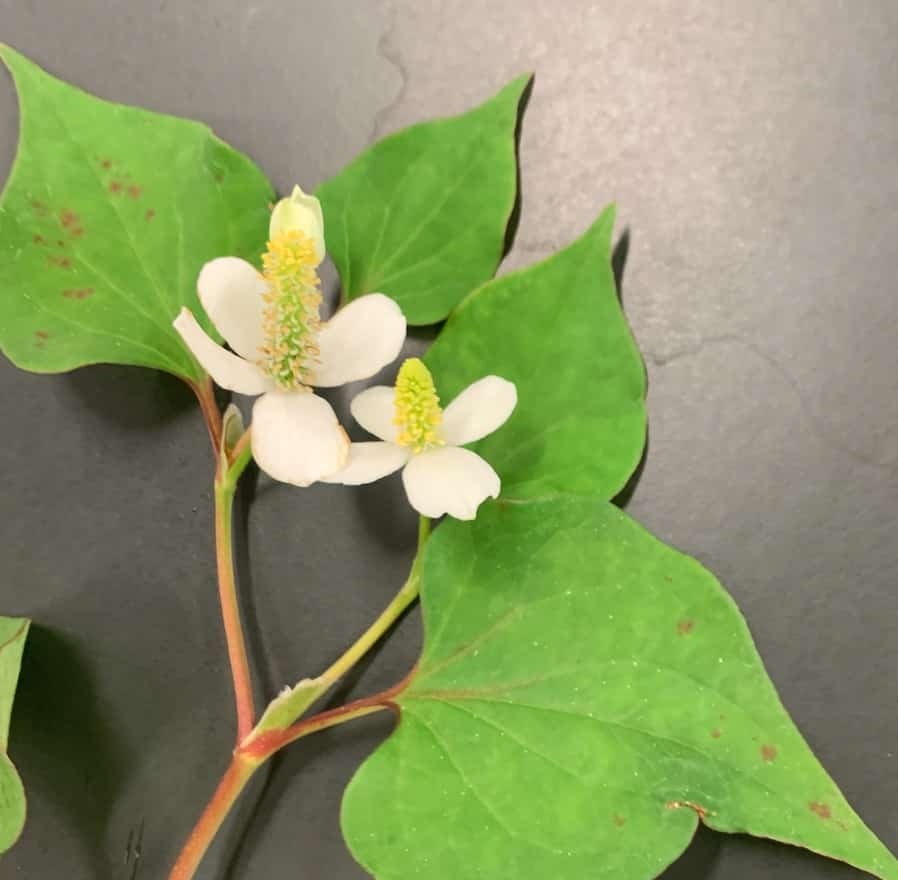
- Shape: Heart-shaped and slightly thick.
- Veins: Net-like (reticulate venation), a key feature of dicots.
- Smell: Releases a strong, unique odor when crushed. This is for self-defense (e.g., antibacterial properties).
- Observing Leaf Structure: Use a magnifying glass to observe the net-like veins, a classic dicot trait.
In early spring, the undersides of the leaves are purple.
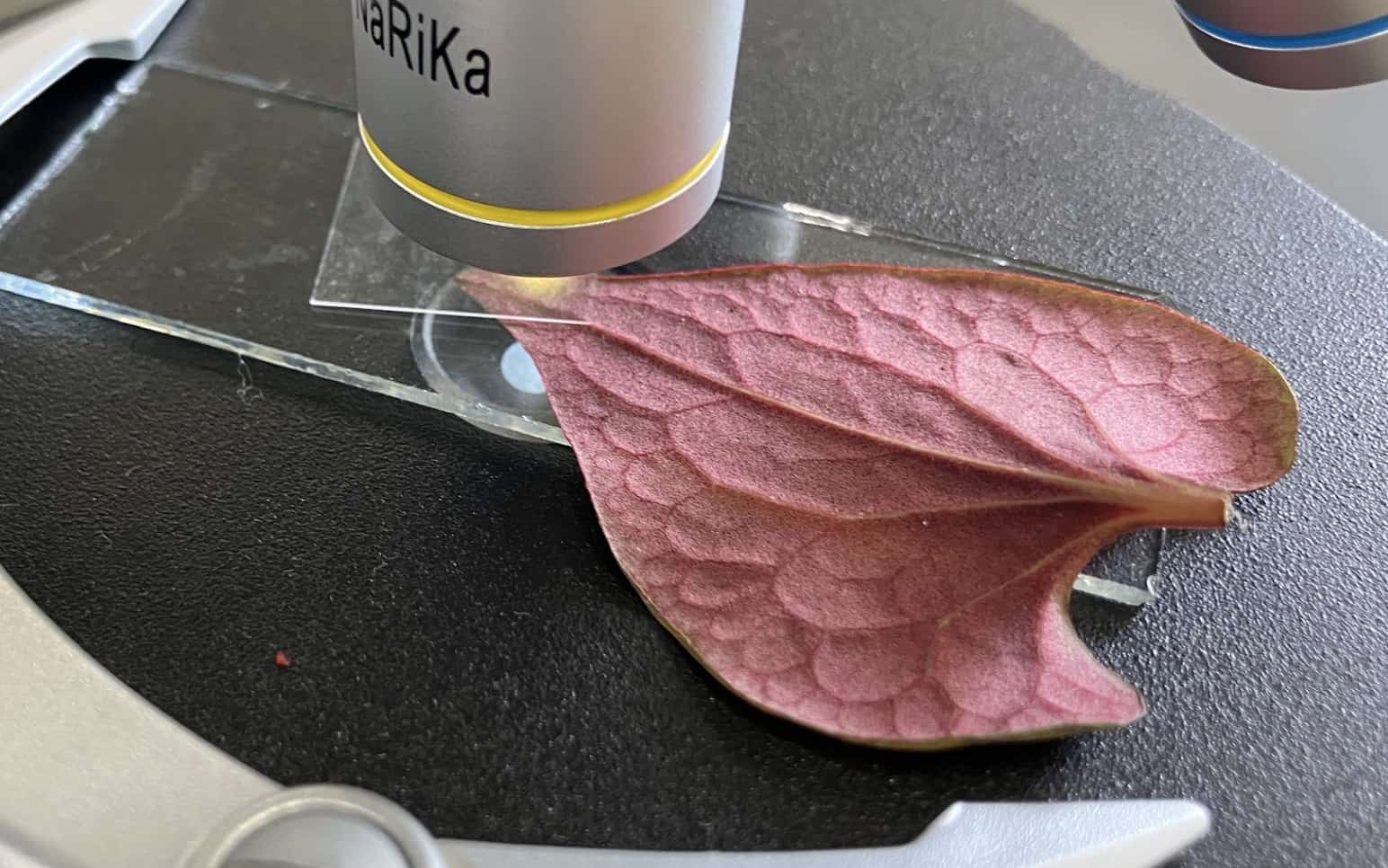
The reason young Doku-dami leaves (and the undersides of early spring leaves) are purple is because they are packed with a pigment called anthocyanin. Think of anthocyanin as the plant’s personal pair of “sunglasses.” When the leaves are still young and tender in the spring, they wear these purple shades to protect their precious chloroplasts from harsh UV rays. A pretty cool adaptation, right?
Why They Turn Green in Summer
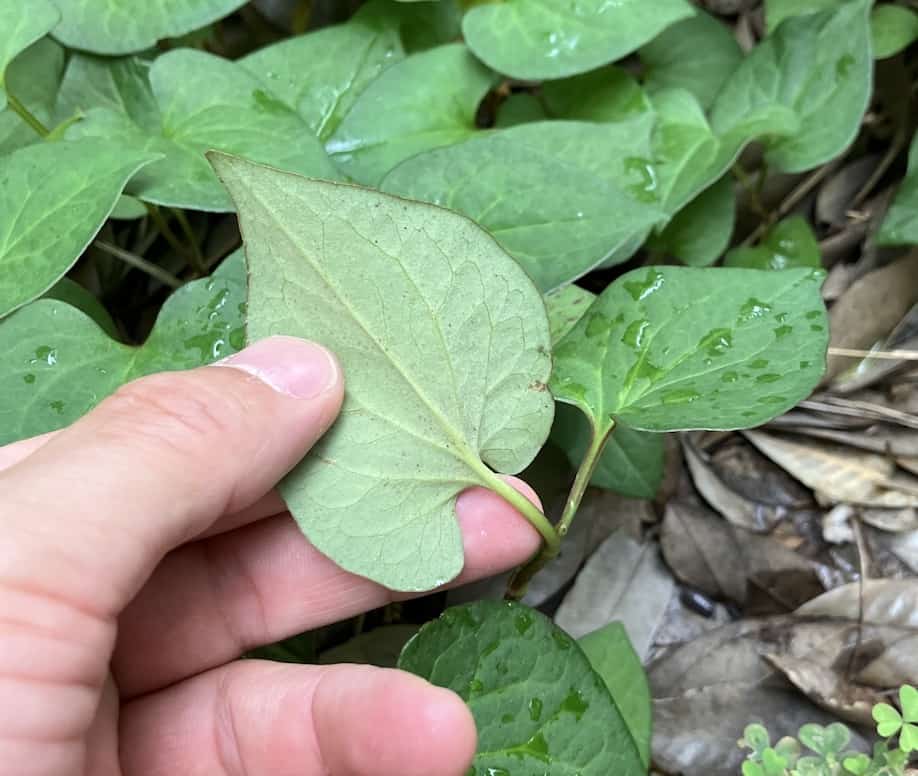
As summer arrives and the leaves mature, photosynthesis kicks into high gear. The plant produces more chlorophyll (the green pigment), which either reduces the relative production of anthocyanin or simply masks it. As a result, the undersides of the leaves turn green. Essentially, once the plant is in a good environment for photosynthesis, it prioritizes that process, boosting the green chlorophyll to work as efficiently as possible.
You can also observe the stomata on Doku-dami leaves. Check out this article for more on that!

🌼 Flower Characteristics
What look like four white petals aren’t petals at all! They are actually modified leaves called “bracts.”

The actual flowers are the tiny, yellowish bits packed densely onto the central spike. What’s more, each of these tiny flowers is incredibly simple: they have no petals at all, just a stamen (male part) and a pistil (female part). Doku-dami conserves energy by not growing flashy petals. Instead, it uses those large white bracts as a “landing pad” to attract insects. A brilliant strategy, isn’t it? For the record, a cluster of flowers like a dandelion is called a capitulum, but this spike-like arrangement is called a… well, a spike!
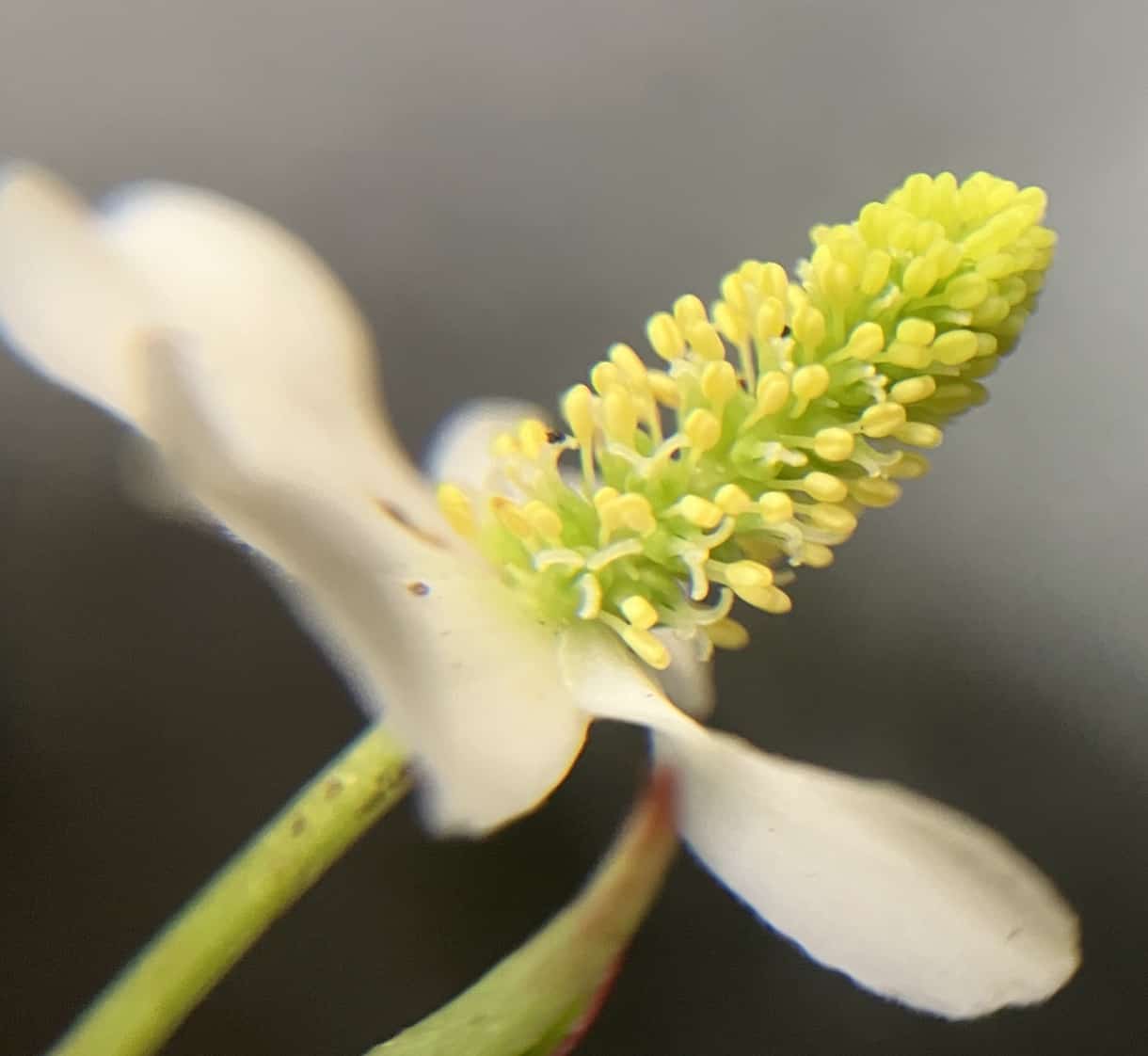
I took a flower and looked at it under a microscope. This is at 40x magnification.
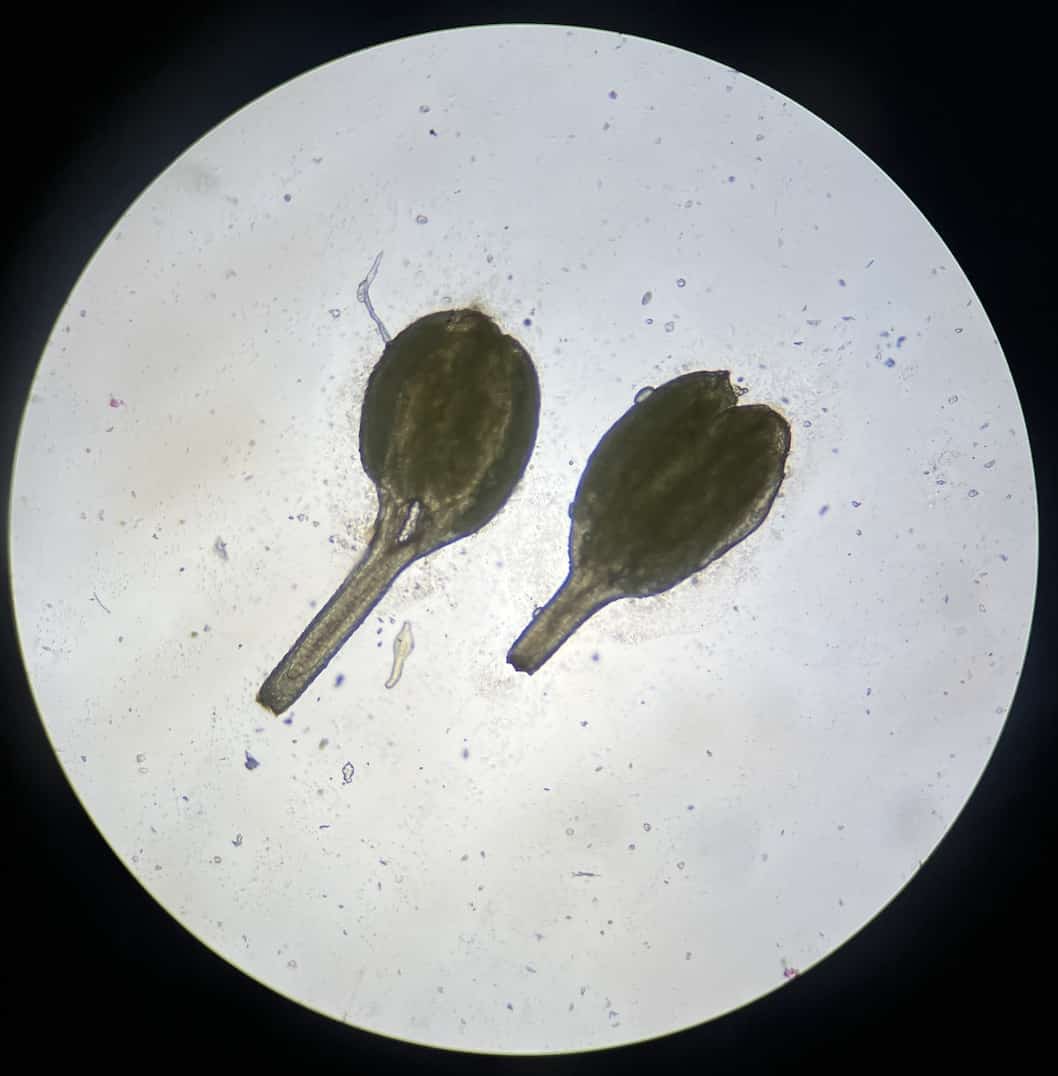
🌱 Root Characteristics
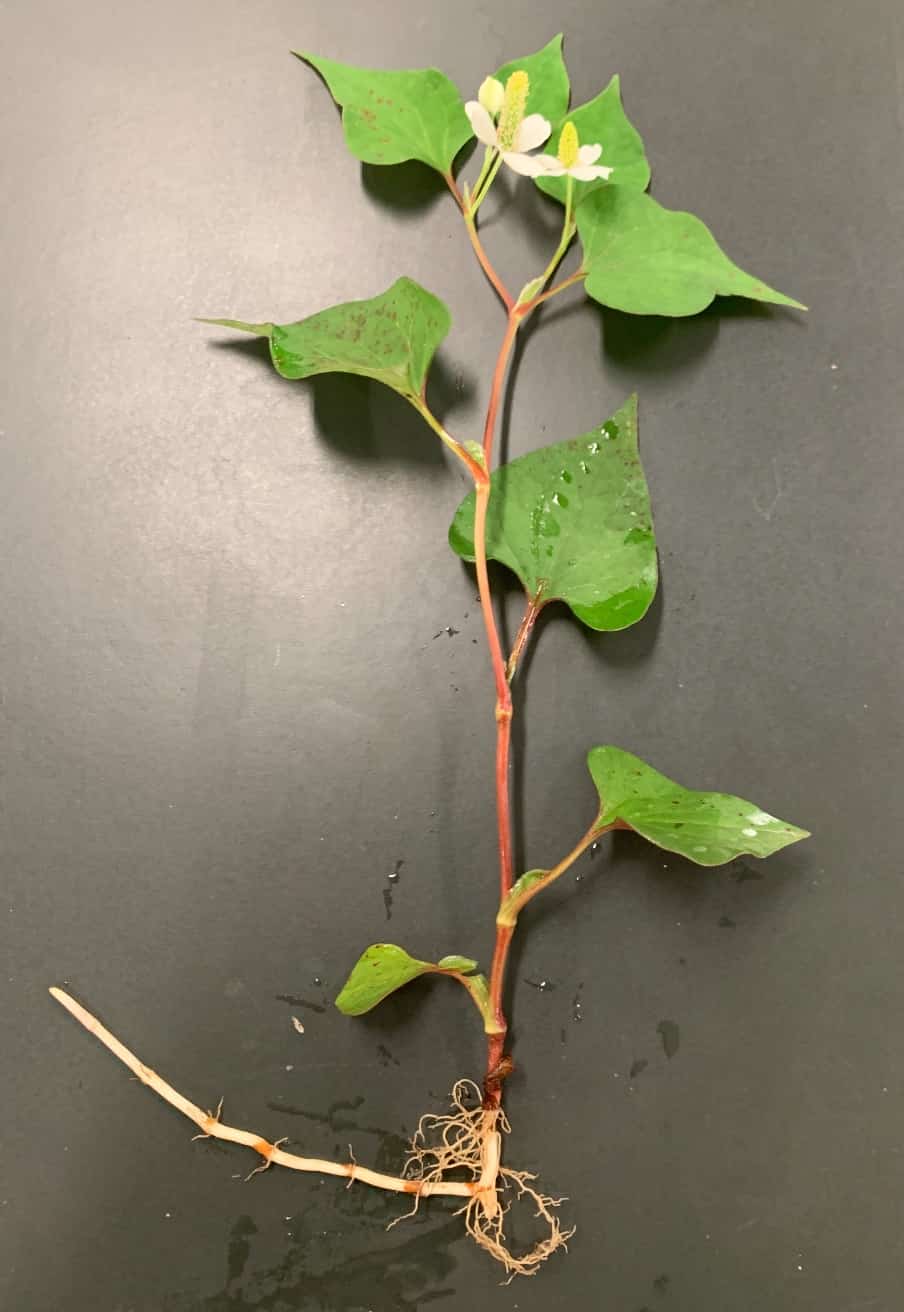
- Type of Roots: Fibrous roots, known as “adventitious roots,” grow from the “nodes” of the rhizome (underground stem). While dicots usually have a thick main taproot with lateral roots branching off, Doku-dami lacks a clear taproot and lateral root system. This is another one of its unique features.

- Incredible Reproductive Power: The secret to Doku-dami’s toughness lies in these rhizomes. They spread horizontally underground, constantly expanding their territory. Even more amazing, a new plant can regenerate from even a tiny broken fragment of a rhizome.
- A “Difficult-to-Control” Weed: Because of this incredible regenerative ability, once it’s established, it’s notoriously difficult to eradicate, earning it the reputation of a “difficult-to-control weed.”
☀ Growing Environment
- Prefers shade and damp soil.
- Grows in dense clusters around homes, in gardens, on roadsides, and in wooded areas.
- If left unchecked, it will quickly take over an entire area.
This is a great opportunity to have students sketch the plant. I often use it for a comparison exercise between dicots and monocots.

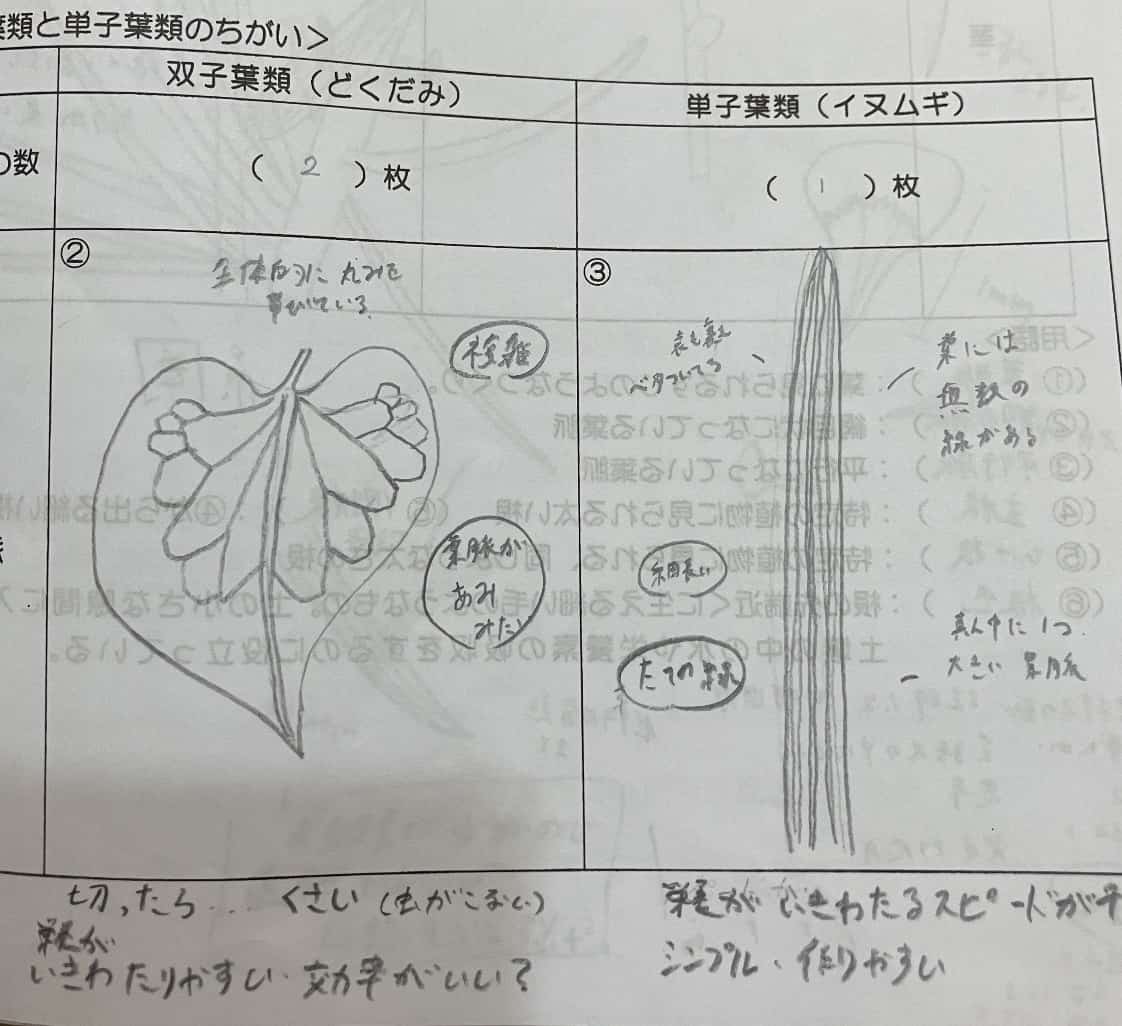
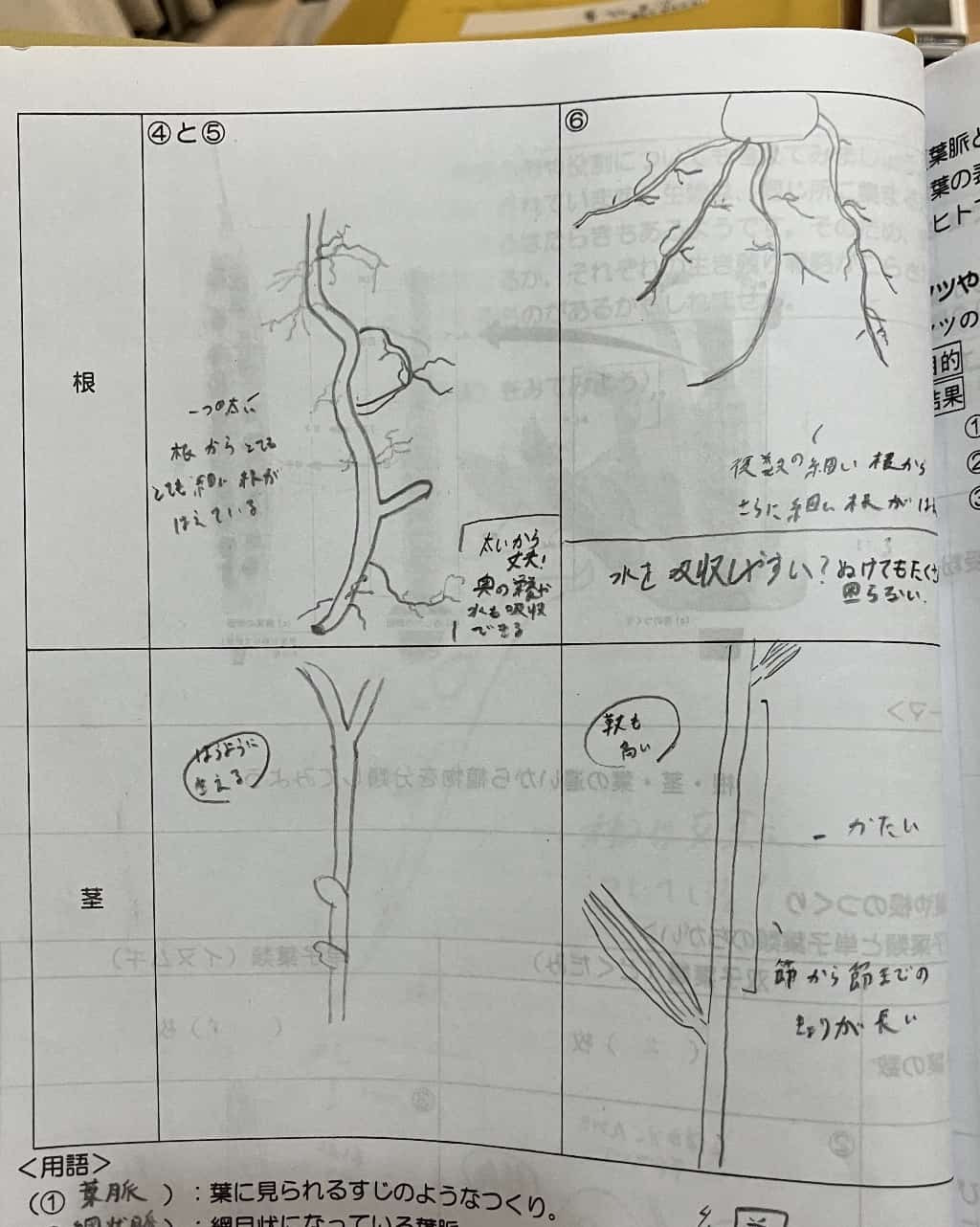
It’s great for comparing with something like Brome grass (Inu-mugi).
🤝 Doku-dami and Its Relationship with People
With “Doku” (poison) in its name, many people assume it’s toxic, but that’s a complete misunderstanding. In reality, it’s a powerful medicinal herb that has been a part of our lives for centuries.
- Origin of the Name: One theory is that it comes from ‘doku-itami’ (poison/pain), meaning it “eases poison and pain.” Another theory is that its unique smell was likened to a “poison” (doku) and the plant “corrects” or “tames” (tameru) it, leading to ‘doku-dame.’
- Nickname “Jūyaku” (Ten Medicines): Doku-dami also has the nickname “Jūyaku,” which literally means “ten medicines.” This name is said to come from its wide range of benefits (perhaps ten different effects, or just “many effects” in general), proving its importance as a folk remedy for ages.
- Medicinal Uses: It’s known for its anti-inflammatory and antibacterial properties and has long been used in folk medicine, such as in teas or poultices.
- Popular as a herb in the West.
- Sometimes cultivated as an ornamental plant (especially the variegated varieties).
So, while Doku-dami is often shunned as a “difficult weed,” it also has a helpful side that benefits human life, making it a truly fascinating plant.
Takeaways for a Doku-dami Observation Lesson
- Observe the leaf shape and net-like veins to understand the characteristics of a dicot.
- Learn about its clever strategy of having petal-less flowers and modified leaves (bracts) for attraction.
- Examine the rhizomes and adventitious roots to get a real sense of its incredible reproductive power.
- Investigate its smell, the origin of its name, and its medicinal uses to learn about the deep connection between plants and people.
It’s a real shame to just dismiss it as a “smelly weed.” Doku-dami is overflowing with clever adaptations for surviving in tough, shady environments and a powerful will to live. Precisely because it’s so common, it’s the perfect hands-on subject. By having students actually collect it, smell it, and closely observe the structure of its leaves, flowers, and roots, you can spark their intellectual curiosity and leave them amazed at its “survival strategies.” I highly recommend using it for your next class experiment!
Inquiries & Requests
Bringing the wonders and fun of science closer to home! I post easy-to-understand guides and tips for fun science experiments you can do at home. Feel free to search the site for more!
・About the author, Ken Kuwako, click here. ・For professional requests (writing, lectures, experiment workshops, TV consulting, appearances, etc.), click here. ・Get article updates on X (formerly Twitter)!
![]() Check out experiment videos on my Science Topics Channel!
Check out experiment videos on my Science Topics Channel!


